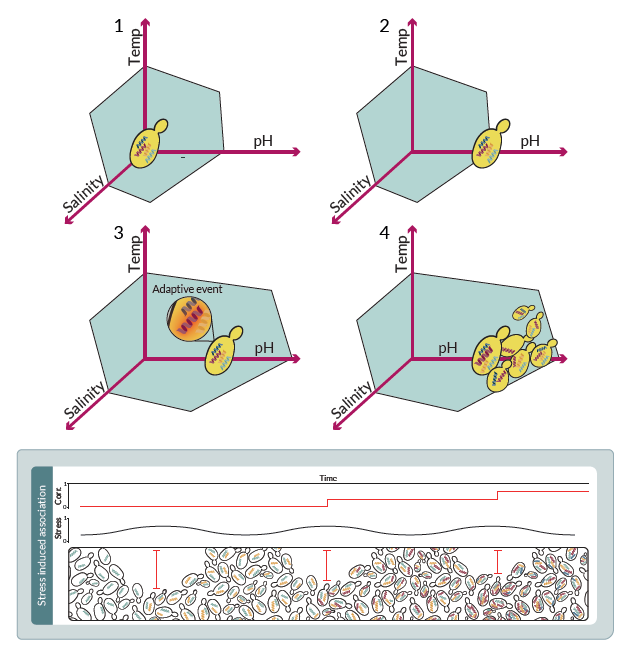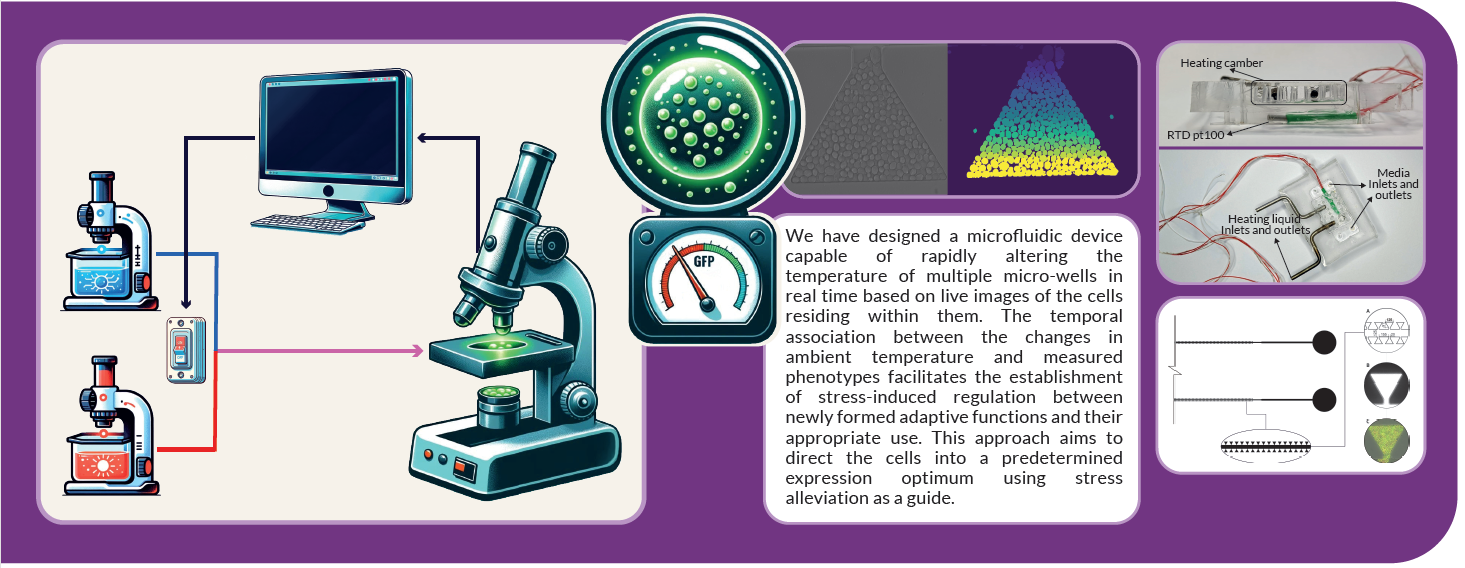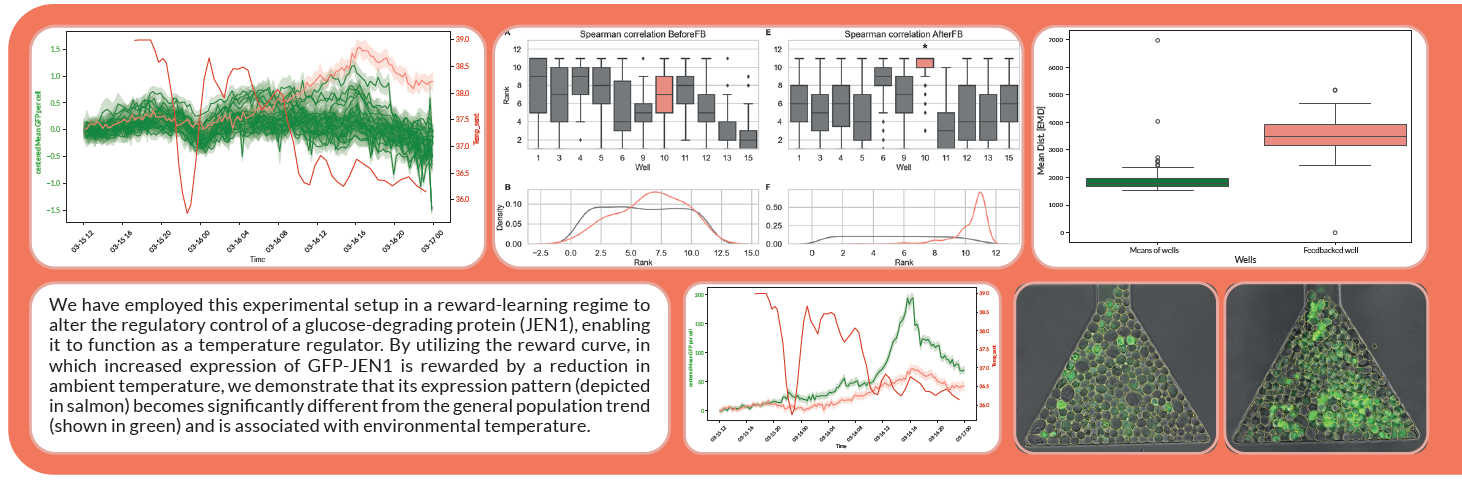Saccharomyces cerevisiae cells can utilize reward learning to form new regulatory associations.
Maor Knafo, Shahar Rezenman, Reinat Nevo, Lior Segev, Michael Elgart, Ziv Reich & Ruti Kapon.
Single-cell organisms constantly face challenges – rapidly changing environments, internal malfunctions, and competition – necessitating swift adaptation. While epigenetic mechanisms facilitate these adaptations, a crucial step remains understudied: integrating newly generated solutions (often from random events) into existing regulatory frameworks. This process of sensing stress, generating a response, and committing it to memory could be formally described as learning, yet it is not typically considered in this context.
We set out to check if the induction of feedback on random events can teach populations to transition a protein from its original function to a new stress-alleviating one by turning a glucose-metabolizing protein into a temperature regulator. For this, we constructed a temperature control system whose setpoint is determined by the expression of a specific glucose-metabolizing protein co-expressed with GFP. We have done so by setting up a stress-alleviating feedback loop whereby the ambient temperature progressively shifts to a more favorable one as more proteins, and subsequently, GFP reporters, are produced. The platform used to conduct this experiment is a microfluidic chip incorporating 1024 chambers, each housing ~300 yeast cells, co-expressing GFP for the feedback and RFP as a control, with both fluorophores originally driven by promoters in the glucose metabolism pathway. After setting an initial aversive temperature (39°C), we transfer temperature control to the automatic system and follow the fluorescence of the population at a single-cell level and the temperature it imposes.
Our findings demonstrate that implementing a reward-based learning approach, where stress alleviation is coupled to specific cellular responses, allows an established function to shift towards a new, stress-responsive role. This process facilitates the formation of an association that allows cells to regulate their environment actively, in this case, temperature. These results shed light on a potential learning-like mechanism employed by single-celled organisms and pave the way for further exploration of how environmental information processing might contribute to the evolution of more complex cellular behaviors.
(1)Organisms inhabit a multi-dimensional niche constituting many biotic and abiotic constraints. (2) Sometimes, environmental conditions change to a point when the cell is pushed to the edge of its inhabitable niche, at which point it can no longer propagate. (3) An adaptive event happens (Mutation epigenetic, etc), and a new beneficial machinery is created. (4) The new adaptive function needs to be assigned to the correct regulatory regime to be useful. At that point, the livable niche has increased.
When looking at these exposures in an ecological context, the more iterations given of a certain stressor, the stronger the association between the function’s activation and the onset of stress and, as a result, its efficacy.



